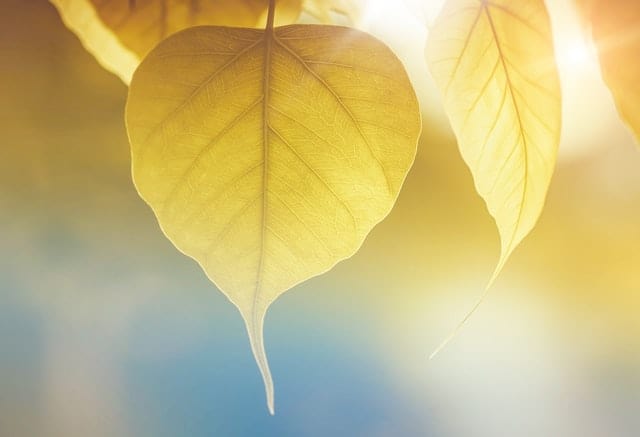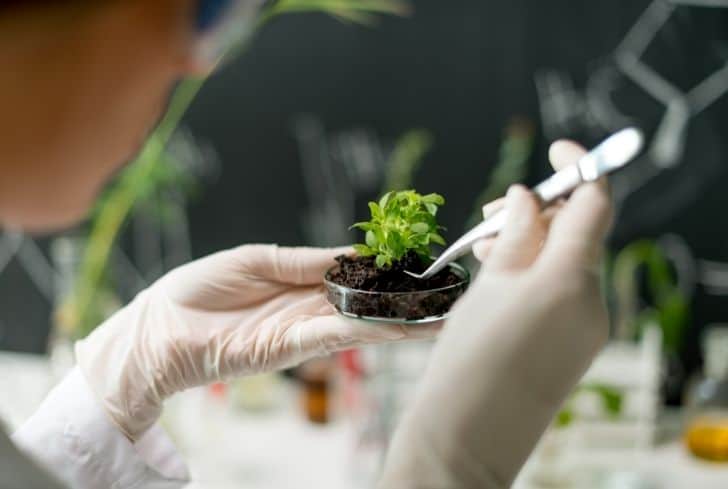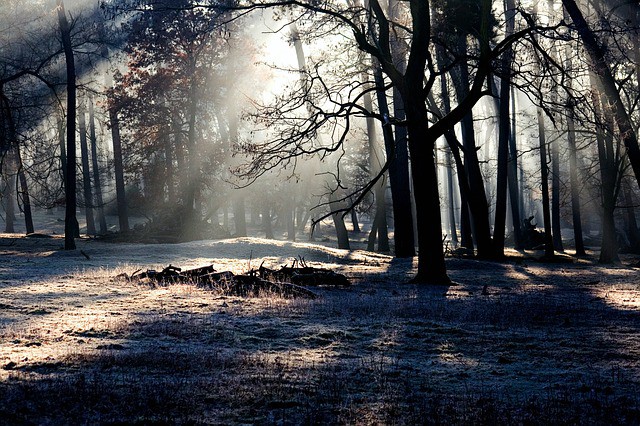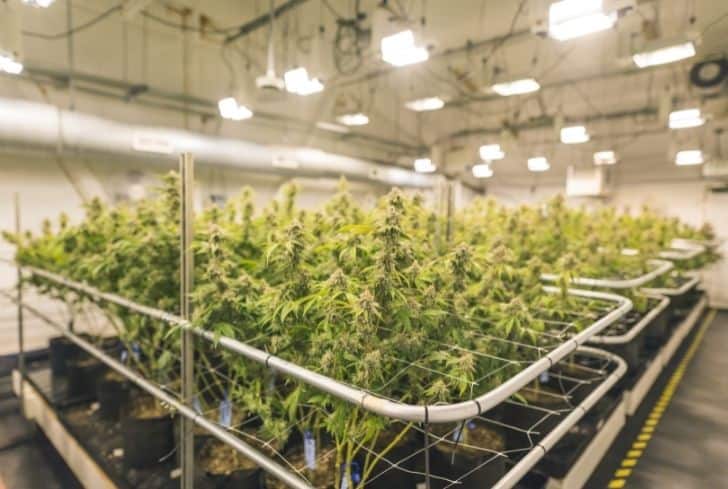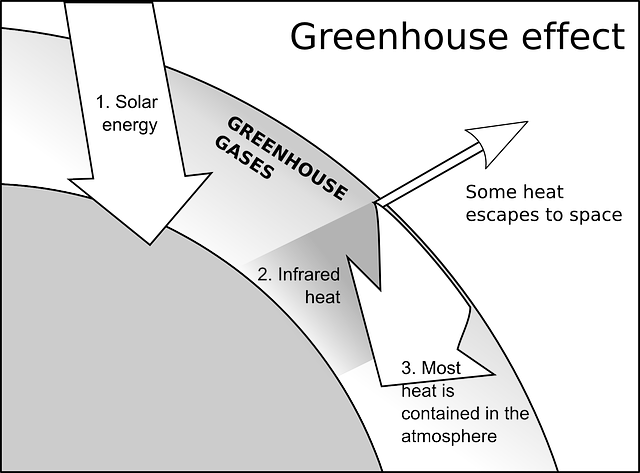Understanding Step by Step Process of Photosynthesis in Plants
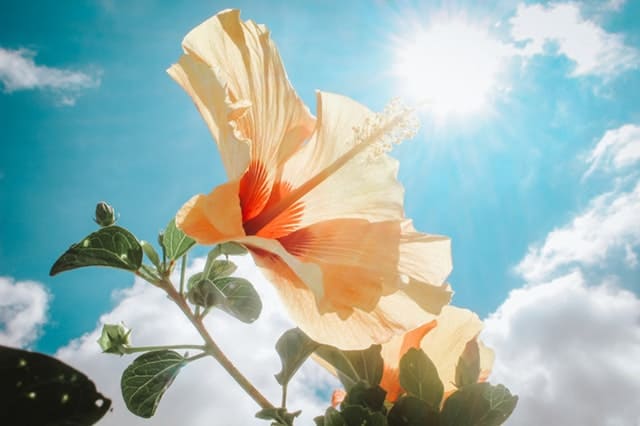
Photosynthesis is the process through which plants convert light energy from the sun to chemical energy. The chemical energy is then stored as sugar. During the process of photosynthesis, plants capture light energy and use it to convert water, carbon dioxide, and minerals into oxygen (released into the air) and glucose (stored in the plant and used as food).
The photosynthesis process occurs in all plants and algae, as well as in some bacteria species. In addition to light energy, the process also requires water and carbon dioxide. And the end product is sugar.
Photosynthesis takes place inside plant cells in small things called as chloroplasts using chlorophyll – the green pigment in plants. While it usually occurs in leaves, it can also take place in stems albeit in minute proportion.
According to Britannica,
“Photosynthesis, the process by which green plants and certain other organisms transform light energy into chemical energy. During photosynthesis in green plants, light energy is captured and used to convert water, carbon dioxide, and minerals into oxygen and energy-rich organic compounds.“
Despite the fact that photosynthesis occurs in plants and algae, it is beneficial for all lifeforms on the Earth including humans.
In this article, we will have a detailed look at the process of photosynthesis and also explore its importance. Let’s get to it.
Step by Step Process of Photosynthesis
In light of the fact that photosynthesis occurs largely in plant leaves, you should understand the structure of the leaf before you learn how the process works.
A typical leaf is made up of the following parts:
- Upper and lower epidermis
- Spongy mesophyll
- Palisade mesophyll
- Cuticle
- Vascular bundles
- Stomata
Photosynthesis does not occur in the upper and lower epidermis as they don’t have chloroplasts. These parts only serve as a protection of the inner cells of a leaf. The Stomata refer to the microscopic holes found mainly on the lower epidermis. They are for reverse respiration – allow carbon dioxide in and let oxygen out.
The vascular bundles are part of the plant’s transport system. They help in the movement of nutrients and water around the plant. Photosynthesis occurs in the palisade mesophyll cells as they have chloroplasts.
Now that we have that out of the way, let’s look at the 4 main steps of photosynthesis:
Step 1
The plant takes in carbon dioxide in the atmosphere through the stomata on its leaves. It is worth noting that there are some stomata on the stems as well.
Step 2
Water gets into the plant mainly through the roots and finds its way to the leaves, where photosynthesis occurs. Plant roots are specially designed to draw water from the ground and transport it to the plant leaves through the stem.
Step 3
Chlorophyll, the green coloring matter of the leaf, traps the energy from sunlight as it shines on the leaf. It is worth noting that it is chlorophyll that gives the leaf its green color.
Step 4
The solar energy is used to break water down into hydrogen and oxygen. Then hydrogen is combined with carbon dioxide to make sugar, which is food for the plant. Oxygen is released as a byproduct through the stomata.
Chemical reactions occur with the help of protons from the water molecules and electrons from the chlorophyll molecules to produce Adenosine Triphosphate (ATP). ATP provides energy for cellular reactions and Nicotinamide Adenine Dinucleotide Diphosphate (NADP), which is integral in plant metabolism.
Chemical Formula for the Process of Photosynthesis
This chemical formula summarizes the whole process of photosynthesis:
6CO2 +12H2O + Light → C6H12O6 + 6O2+ 6H2O
And there are six factors that influence the rate of photosynthesis:
- Temperature
- Light intensity
- Light wavelength
- Carbon dioxide availability
- Chlorophyll concentration
- Water availability
Namely, the higher the light intensity, temperature, carbon dioxide and chlorophyll concentration, the faster the rate at which photosynthesis occurs. But there is an optimum rate.
In the case of light intensity, photosynthesis rate is higher in red or blue light and very low in green light. Photosynthesis rate decreases with a decrease in water availability.
Now that you understand the process of photosynthesis let’s look at its importance.
Importance of Photosynthesis
Plants play an integral role in the continuity of life on the planet, all thanks to photosynthesis. They achieve that through the following:
1. Atmospheric Gases
In photosynthesis, plants take in carbon dioxide and release oxygen as a by-product. Without the process of photosynthesis, it would be difficult to replenish all the oxygen being used in processes such as combustion and respiration.
Moreover, the amount of carbon dioxide in the atmosphere would rise to dangerous levels. Therefore, it suffices to say that photosynthesis helps to balance atmospheric gases.
2. Food and Energy
Green plants produce their own food through photosynthesis. They are called producers. Conversely, animals and humans are consumers.
They get all of their food from plants, either directly or indirectly. In fact, the larger part of the world’s population gets over 80% of its food directly from plants. The remaining source is obtained from animals.
And animals are part of the food chain, which normally starts with plants. Speaking of the food chain, the energy you get from the food you eat is also a product of photosynthesis, whether the food is from plants or animals.
3. Petroleum Products
Did you know that your car runs on what was once light energy? Or that your cooking gas is a product of photosynthesis?
We get petroleum from plants that stored light energy in their system millions of years ago, thanks to photosynthesis, as well as animals that ate those plants.
The petroleum came into being due to intense pressure applied to the plants and animals over millions of years. Coal and natural gas were also produced in the same way.
4. Wood and Other Side Products
We use wood for a wide range of purposes, including construction and combustion. Paper is also a product of wood.
Moreover, cotton and other natural fibers consist of cellulose produced virtually entirely by photosynthesizing plants. And while wood comes from the sheep, the sheep gets its food from the plants. It is, therefore, suffice to say that we wear clothes courtesy of photosynthesis.
5. Medicinal Products
Most medicines are manufactured using various chemicals extracted from plants. And thousands of plants have been confirmed to have medicinal properties. Aspirin, for example, is derived from salicylic acid.
Salicylic acid comes from the back of the willow tree. Aspirin is a popular painkiller. It is also used to minimize blood clotting in heart patients.
Much stronger analgesic drugs such as codeine and morphine are products of opium. Opium is extracted from the seeds of the poppy plant.
Tests are still ongoing to ascertain the medicinal status of thousands of other plants species, especially those found in the tropical rainforests. In the light of this, it is imperative that we protect the natural habitats of these plant species.
Bottom Line
Photosynthesis is the process used by plants, algae, and some bacteria to convert solar energy into chemical energy. Besides light energy, other photosynthesis ingredients are water and carbon dioxide. It is a complex, enzyme-controlled process that is vital for the existence of all lifeforms on Planet Earth. Namely, all living things are dependent on plants, directly or indirectly.

